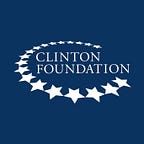Reforming the Rug Industry
Goodweave: From Carpet Looms to Classrooms (2013)
Commitment by: GoodWeave International
Commitment Partners: Target Corporation, AG Foundation, Inc., The Ford Foundation, Walk Free, UNICEF, CG Charitable Fund, Greater Impact Foundation, Dining for Women, KarmaTube, Hearst Corporation, The Rug Company, Company C, Macy’s, Inc., Esprit Holdings Ltd., Skoll Foundation, Sundance Institute, Humanity United, U.S. Department of State, U.S. Department of Labor
It takes one million knots to complete a handmade 8 x 10 foot rug. The intricate detail involved in the work means that smaller hands are most successful in tying these knots quickly. As a result, an estimated 250,000 children in India and Nepal alone are exploited to make rugs and carpets for export to North America and Europe. These ‘carpet kids’ range in age from four to 14. They are trafficked, sold, and often forced to work as many as 18 hours a day.
In 2013, GoodWeave International committed to increase the global market share of its certified child-labor-free rugs from 4.5 to 6.5 percent by September of 2016, with the ultimate goal of reaching a tipping point by 2020. Through its three-pronged approach, GoodWeave will free 1,500 child laborers and reach another 17,000 through prevention strategies — improving outcomes for these children while still providing consumers with carpets that do not propagate a cycle of modern day slavery.
1 Educate and Engage Consumers
Consumers play a huge role in advocating for child-labor-free products. Last year’s ‘Stand with Sanju’ consumer awareness campaign educated 85 million targeted consumers — teaching them to look for the GoodWeave label and to demand that carpet makers and interior designers start producing certified products.
2 Secure Certification Partnerships
Every organization that adopts GoodWeave’s certification process ensures that more children are protected from exploitation. In 2014, GoodWeave increased its market share to 5.5 percent and signed license agreements with 13 import and retail brands across the globe, including Target Corporation.
3 Expand Supply Chain Monitoring
In order to be certified, carpet makers who join GoodWeave open their supply chains in India, Nepal, and Afghanistan for unannounced inspections. These inspections reach all levels of sub-contracting, exposing where child labor is hidden. If children are found working during factory inspections, they are removed and offered a home — along with counseling, medical treatment, and education. Last year, GoodWeave rescued 63 children from carpet making.
What You Can Do
Carpets that are certified by GoodWeave have a label on the back upper right-hand corner. Other certification methods involve documents and seals. Asking about the certification process when you purchase a rug or carpet not only keeps you informed, but also increases the demand for child-labor-free products among other consumers, businesses, and importers.
